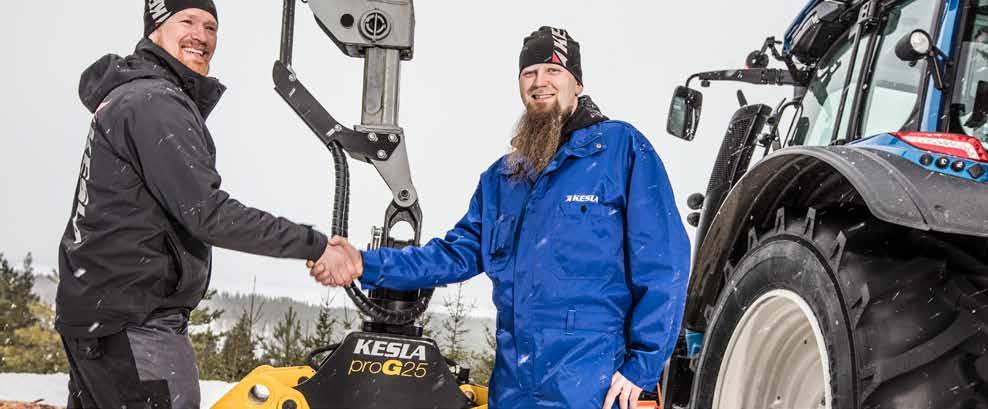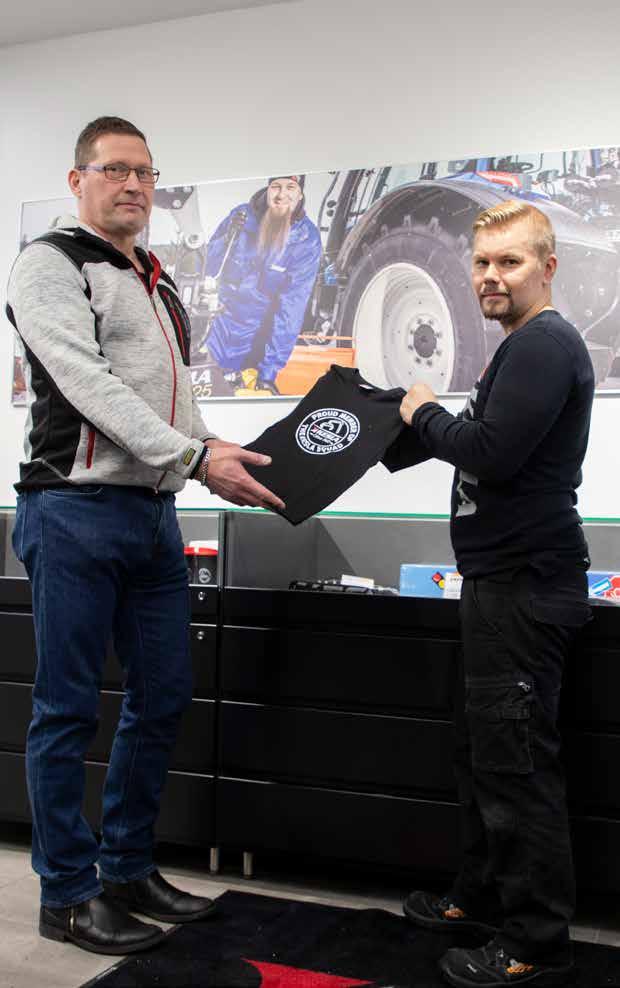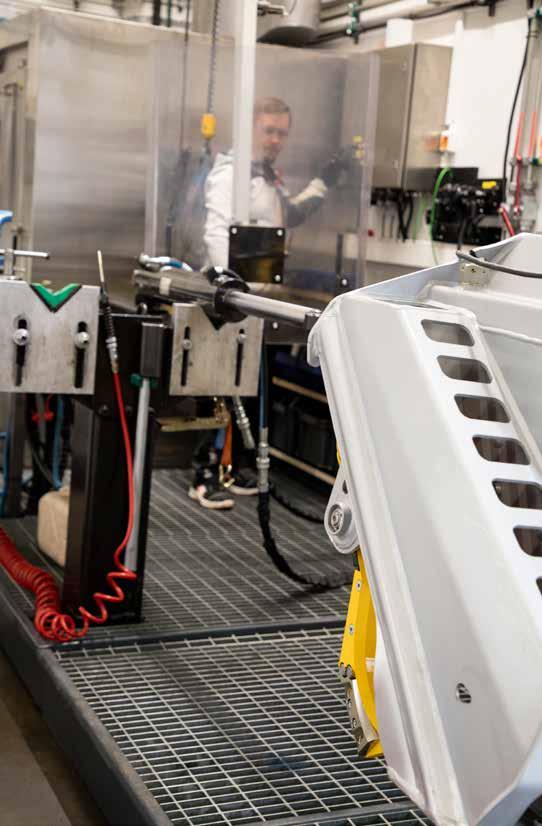
3 minute read
Developing after-sales services
“Sales sells the first machine, and after-sales service sells the following ones,” says Reijo Tuononen, Kesla’s After Sales Manager.
Kesla’s after-sales services include spare parts, maintenance, warranty and product advice related to the package. As After Sales Manager, Tuononen is responsible for Kesla’s after-sales operations and development work. He is the direct supervisor to three service managers and two service technicians. Tuononen’s organisation cooperates closely with the company’s three business units, which each have specialised maintenance personnel.
In after-sales services, Kesla has focused on consumables and spare parts. In Finland, the company has a network of more than 30 service points. Construction of a similar service network in Germany, Norway and Sweden is under way. So far, local importers provide after-sales services in all Kesla’s export areas. Globally, Kesla has approximately 140 outlets and service points.
For the common good

KESLA branded products have gradually been added to the spare parts range as well. The After Sales Manager Reijo Tuononen (left) and Spare Parts Coordinator Kimmo Karvinen.
When Kesla reacted to the durability issue detected in the company’s cranes in November 2019, the stock exchange release announced a new separate quality organisation. Kesla also announced that it had made product development more systematic and improved quality of through a product development process based on gate reviews and FMEA analysis. Failure Mode and Effect Analysis (FMEA) examines in particular possible material and equipment defects, the consequences of which may have a significant impact on product performance and market position. The aim is high product quality, durability and convenience of use.
“Due to the development of the policy, the risk of similar problems occurring in the future is significantly lower,” said CEO Simo Saastamoinen in the stock exchange release.
All quality improvement measures, from design to product development and production, benefit after-sales services. When there is no need to react afterwards, after-sales service re- sources can be proactively allocated to a better customer service.
A lot has happened in the field of after-sales services since Reijo Tuononen joined Kesla in 2008. Improving quality is an everyday fact. The company has, among other things, established a reception inspection station. Measurements of new products in sampling inspections, such as cylinder performance tests, and analysis of defective products returned from the field to the factory, are carried out at the reception inspection station.
Kesla has also studied service design, the importance of which Tuononen believes will only grow. As a result of a service design project carried out in 2019 by Kesla and students of the University of Eastern Finland, Kesla modernised the premises of its service centre in Joensuu. Customers and Kesla personnel were involved in the project using benchmarking and testing.
Personal
Kesla wants to intensify communication with the customers. This aim is supported, among other things, by the accumulation of a customer data register. Service will be more personal, more accurate and faster.
The company plans to use digitalisation in spare parts e-commerce and online training, among other things. Kesla has started cooperation with Riveria Vocational School. Riveria will be used to learn how after-sales services can better train its customers.
“Spare parts service, maintenance, warranty and advice must work smoothly to build a strong customer relationship. Another clear trend is that customers are becoming more professional and interested in more extensive and comprehensive services.” The goals are ambitious as after-sales services are being developed with high stakes. Quality is at the heart of everything. “We must always try to do things right and more and more proactively. If problems arise, Kesla reacts responsibly according to its values.”

The inspection centre was completed in early 2020. In the photo the Receiving Inspector Pasi Sormunen.
Crane columns reinforced
In November 2019, Kesla issued a performance warning when a durability problem had been detected on KESLA 2124L cranes. Kesla reacted in accordance with its responsibility value and announced that the company would replace the columns of all of such cranes delivered from 2013 onwards with a new reinforced construction. This particular crane model had been developed for the needs of longwood transportation in Central Europe. Model marking L referred to a lightweight 24-tonne crane, which was a lightweight version of the 2024 crane. Due to the corrective measures, Kesla made a non-recurring expense provision of €700,000, which meant that the company’s operating profit was expected to remain at the same level as in 2018.

The replacement of the 2124L model’s columns went quite well. In the photo the Welding Operator Esko Paavilainen preparing column changes.










